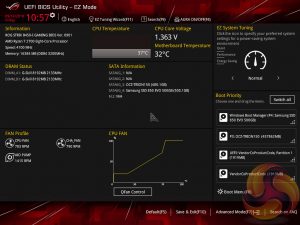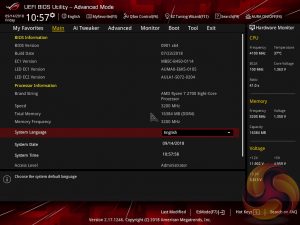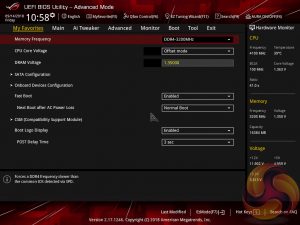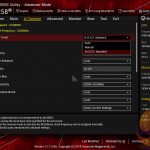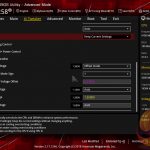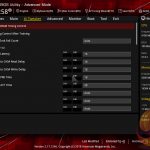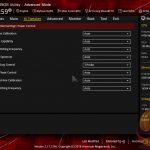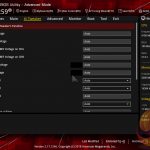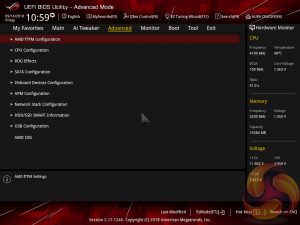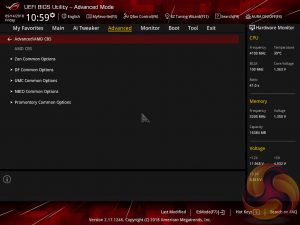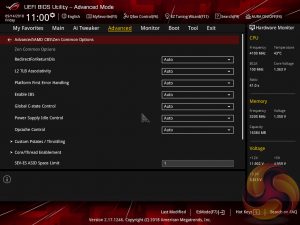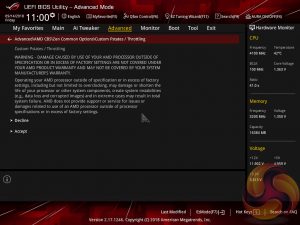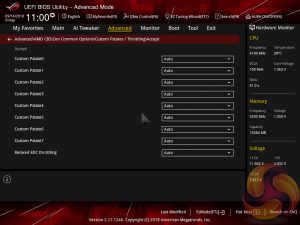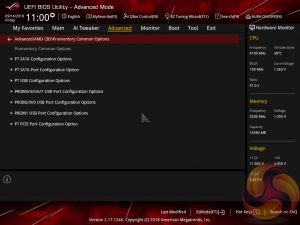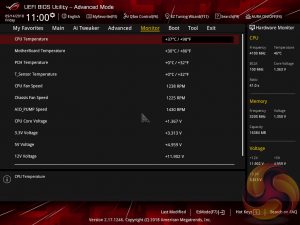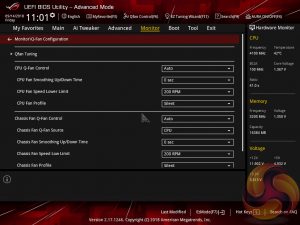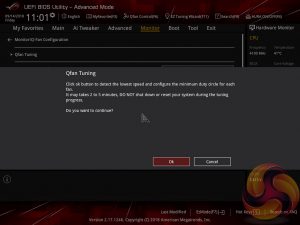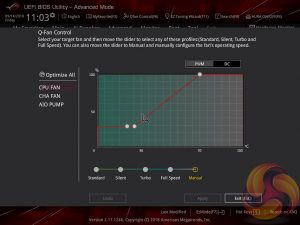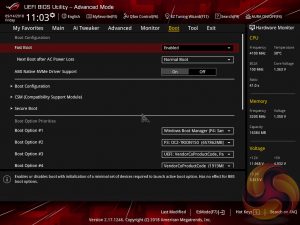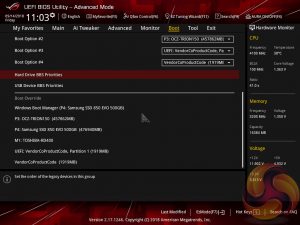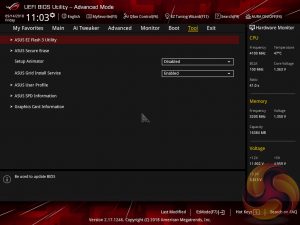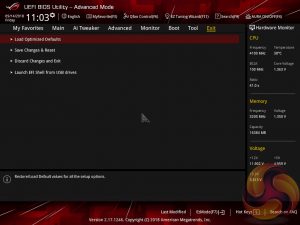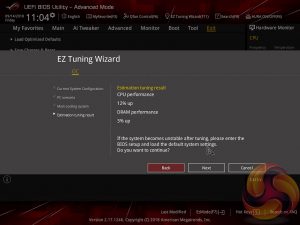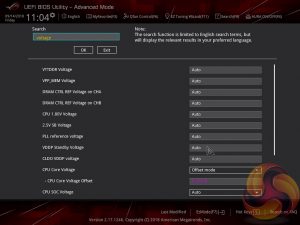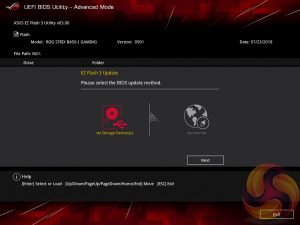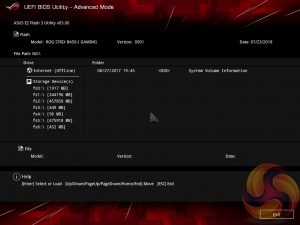The ASUS UEFI enters straight into the EZ Mode splash screen which has a selection of frequently used settings including XMP profiles (called D.O.C.P on AMD ASUS motherboards), boot device order and fan speeds.
Pressing F7 takes the user into the advanced section of the UEFI but there are some additional tools that can be accessed from the splash screen such as Q-Fan Control and EZ System Tuning.
The first tab is MyFavorites which stores the most frequently accessed UEFI settings. The next tab, Main, contains detailed processor and BIOS version information.
If you are unable to display some of the images on these pages, disable your ad blocker as it interferes with our gallery code.
AI Tweaker is the UEFI tab which contains the vast majority of performance tuning settings pertaining to the CPU and DRAM. From here you can set XMP (D.O.C.P) profiles, overclock the CPU, set all the various voltages and voltage operation modes, change the Load Line Calibration (LLC) and considerably more.
LLC has 5 levels on this motherboard, with 1 being the least aggressive and 5 the most. The CPU voltage modes include override, adaptive and offset.
By enabling the automatic overclocking function (EZ Tuning Wizard) the CPU multiplier is simply set to 35 while the memory was ignored, when using the Ryzen 7 2700. Much better performance can be had through manual tuning and by enabling D.O.C.P (XMP).
Unlike on Intel platforms (such as Z370), enabling D.O.C.P/XMP does not set the CPU’s Turbo clock higher since the CPU Turbo behaviour is controlled by AMD’s proprietary XFR2 (Extended Frequency Range 2) and PB2 (Precision Boost 2) technologies.
There is a significant selection of performance and compatibility parameters to be found under the Advanced section should the need arise. As well as a number of other peculiar settings related to the functions of onboard devices, LEDs, USB and storage controllers and more.
On AM4 motherboards there is a section entitled AMD CBS which contains a large number of advanced settings specific to AMD’s AM4 platform. These include various power and thermal controls (C and P-States) and other platform-specific functions for the system chipset and CPU.
The Monitor tab will allow you to instruct the UEFI how to handle temperature data from the various sensors as well as what to do with fan speed profiles. For example, where a fan speed profile is temperature dependant you can choose which temperature sensor to use.
Q-Fan Control is a must-use utility since it will calculate the fan speed ranges of all PWM or DC fans on the 3 controllable fan headers. Once the voltage-to-fan-speed values have been calculated the user can then assign a preferred profile to each fan from the four presets (standard, silent, turbo, full speed) or simply set a custom profile using manual mode.
The Boot tab is as expected in delivering the key boot options such as secure boot, boot priority, boot override and boot compatibility options.
Users needing to update the UEFI (via the EZ Flash Utility), save, import or export BIOS settings, or secure erase a storage drive should refer to the Tool tab.
The Exit tab is fairly self-explanatory and helpfully provides a summary of changes upon exit.
The search function allows a text string to be searched against all the UEFI parameters. It isn’t a smart search so doesn’t have an auto-fill function and will not find similar items to your search string i.e. M.2 when M2 is searched.
We have tried the automated ASUS overclocking utility, EZ Tuning Wizard, before and it provides your CPU and memory with a crude automatic overclock depending on which options you select and the hardware you are using. In our case it provided 3.5GHz for the Ryzen 7 2700 and our memory was left unchanged at 2133MHz JEDEC when running from optimised defaults.
However, it applies a high “auto” voltage to account for variation in the quality of CPUs so it will often apply more voltage than necessary, it also fails to recognise XMP/D.O.C.P profiles and thus doesn’t get the most out of the memory. Users are better off setting the memory profile, attempting a manual overlock or leaving AMD’s XFR2 and PB2 to itself.
The EZ Flash utility is very simple to use and allows the UEFI to be updated from either a local disk or the internet using the Intel I211-AT Gigabit Ethernet adapter, but not over the onboard WiFi module.
 KitGuru KitGuru.net – Tech News | Hardware News | Hardware Reviews | IOS | Mobile | Gaming | Graphics Cards
KitGuru KitGuru.net – Tech News | Hardware News | Hardware Reviews | IOS | Mobile | Gaming | Graphics Cards


